We’ve put together the ultimate guide to help you determine the best way to price your logo design services.
Pricing logo design requires careful consideration of various factors, including the client’s needs and budget. You should also consider your experience and expertise when deciding how much to charge for a project.
In this comprehensive guide, we’ll examine several different pricing strategies (such as hourly rates and flat fees) and explore ways to communicate your prices clearly.
If you want to make sure that your logo design business is profitable, then it’s important for you to learn how to price your services.
Understanding the Client’s Expectations
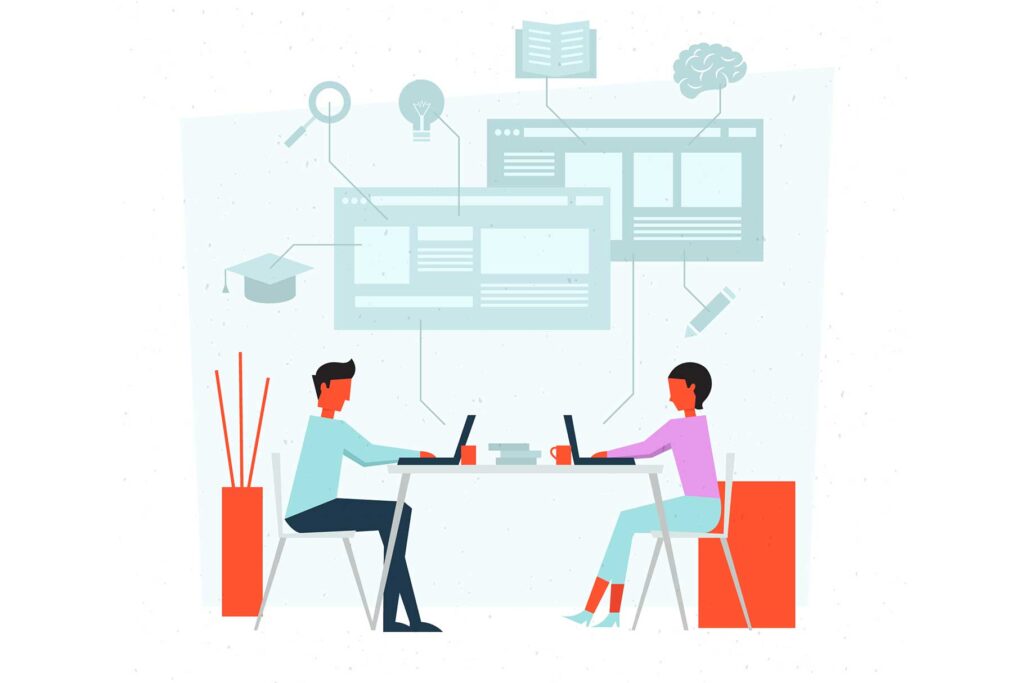
When it comes to setting prices for logo design services, understanding the client’s needs and expectations is an important step.
The client consultation is the point in a project at which crucial information about the scope, goals and requirements should be gathered.
By actively listening to your client’s vision and objectives, you can more accurately assess the level of complexity and how much time is needed.
By identifying the client’s budget and timeline constraints early in the process, you can align your pricing strategy accordingly and propose realistic solutions.
Demonstrating your commitment to meeting the client’s needs and expectations during the negotiation phase can help you gain a solid foundation for future working relationships with that customer.
A logo design project is more likely to succeed if it begins with clear communication and collaboration between the client and designer.
Factors to Consider in Pricing Logo Design Services

Pricing logo design services involves considering a number of factors to ensure a mutually beneficial arrangement. It is important to understand these factors in order to set the right value on your work and establish an appropriate price point.
Here are some things to consider when pricing logo design services:
1. Time and Effort
Evaluate the size and scope of the project, taking into account factors such as research, ideation and design iterations.
Planning your time and effort is the first step to setting a price for any project. Complex projects will take longer, so you must account for this when determining cost.
2. Experience and Expertise
Consider your skill level and experience. A higher reputation commands a higher rate of pay. Evaluate your portfolio, track record, and unique skills that set you apart from the competition when setting rates for yourself or others with whom you work.
You can charge more for a project if you have the experience to complete it well.
3. Market and Competition
Research the average cost of logo design services to gain insight into what prices you should charge for your own work.
Understanding the market helps you set appropriate prices, no matter what they are.
4. Client’s Budget and Value Perception
It’s important to balance your client’s budget with the fees you charge. If their budget is small, consider lowering your fees.
Educate your clients on the long-term benefits of investing in a professionally designed logo, which can help them see why it might be worth paying more for.
When you consider all of these factors holistically, it’s easier to arrive at a pricing structure that reflects the value you bring and meets your client’s expectations. Remember: Pricing isn’t one-size-fits-all—each unique project calls for its own tailored approach!
A flexible pricing strategy gives you room to negotiate while ensuring that your time and expertise are appropriately compensated.
Monitor market trends, customer feedback, and your own experience to help you keep your pricing model fair.
Also, read The Evolution of Logo Design in the Digital Age
Pricing Strategies for Logo Design Services
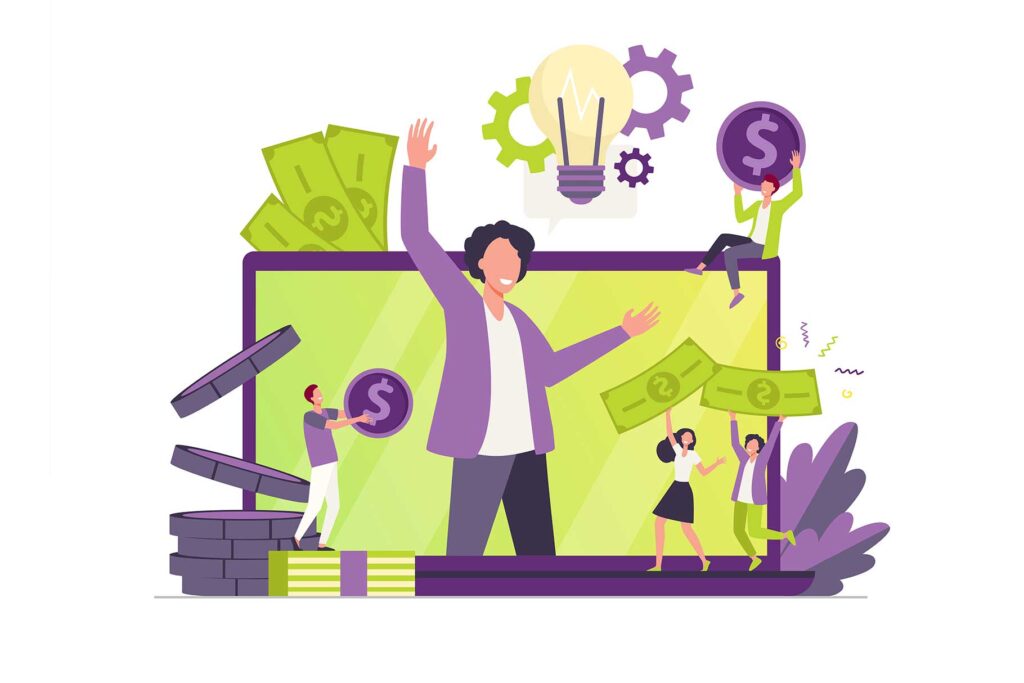
When setting the price for your logo design services, here are a few things to keep in mind. The right strategy depends on a range of factors, including your own experience and knowledge.
It is important to understand the advantages and disadvantages each approach brings before deciding whether it will meet your needs and goals.
Pricing Strategies for Logo Design Services:
1. Hourly Rate Pricing
This strategy involves calculating an hourly rate based on your expertise, the complexity of the project and how much you would charge if you were paid by the hour.
It allows you to track your time accurately, ensuring that you are compensated for the actual hours spent on a project. However, clients may be concerned about how much money they will ultimately spend.
2. Flat Fee Pricing
With this strategy, you provide a fixed price for the entire project. This way, clients know what they will pay at the outset and can plan their budgets accordingly.
However, it is important to take a careful look at the project requirements in order to avoid undercharging or overcharging.
3. Value-Based Pricing
This strategy involves charging your clients based on the value of a strong logo to their business. You must understand and be able to articulate that value clearly before you are qualified for this pricing method.
Value-based pricing allows you to charge the true worth of your work—but it can be hard to explain and justify.
The type of pricing strategy you choose should be tailored to your target market, existing competition and client preferences.
You may also want to combine different strategies for different types of projects—for example by offering discount packages when clients book several (or all) services with you at once.
Make sure that your pricing strategy matches the value you offer clients.
Communicating and Justifying Your Pricing
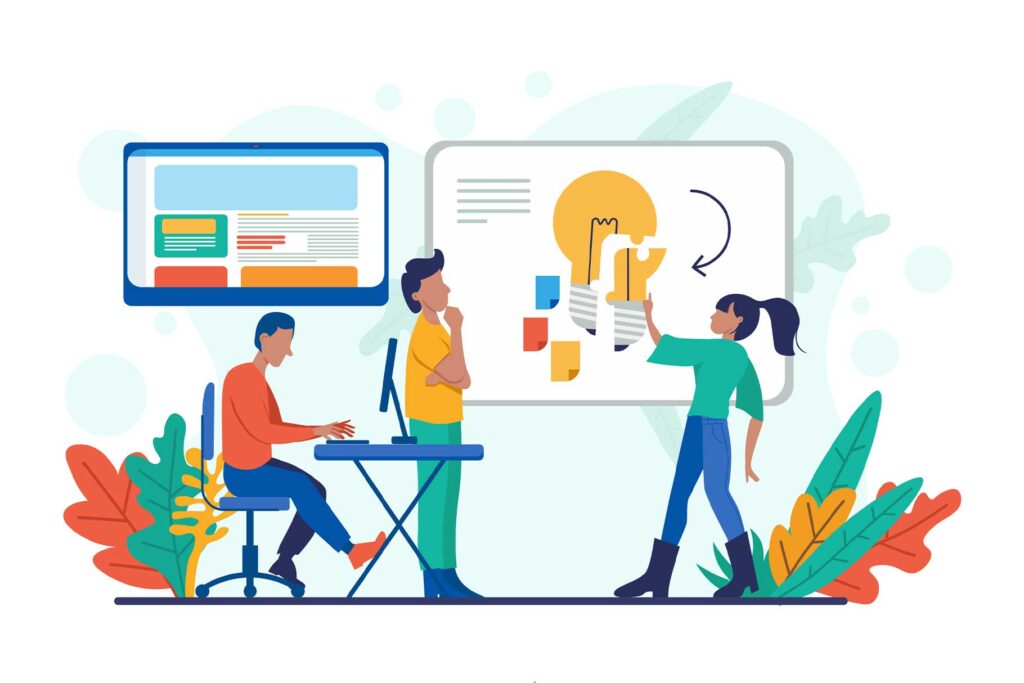
When it comes to communicating about your pricing, you’re better off assuming that clients have concerns or objections and addressing them up front. Here are some key points:
1. Educate about the Process
Clearly explain the logo design process, including research, conceptualization, and iterative work. This helps clients understand why you might need more than one draft to complete a successful brand identity project.)
2. Breakdown of Deliverables
Explain what products and services your clients will receive, including their format and usage rights. Also let them know about any additional branding guidelines you’re providing for free with the package.
3. Value Proposition
Articulate the benefits of a professionally designed logo, such as improved brand recognition (leading to more customers) and credibility (which leads to loyalty from existing clients)—then emphasize that these long-term value propositions are worth investing in.
4. Portfolio and Expertise
Show potential clients what you can do by highlighting your previous work and explaining how you created it. Demonstrate that the skills and creativity they see in your portfolio will translate into their brand identity.
5. Comparison and Market Research
If you want to attract customers, it’s important to focus on what sets your business apart–whether that means offering a unique design approach or additional services.
6. Client Testimonials
Build trust with potential clients by including testimonials or case studies from satisfied customers on your website.
Open and transparent communication is key to addressing any clients’ concerns about the cost of your services, as well as justifying that cost. It helps build trust between you and your client by demonstrating both professionalism on behalf of yourself or business.
You may also like How Negative Space in Logo Design Makes a Brand Strong
How to Talk Price With Clients?
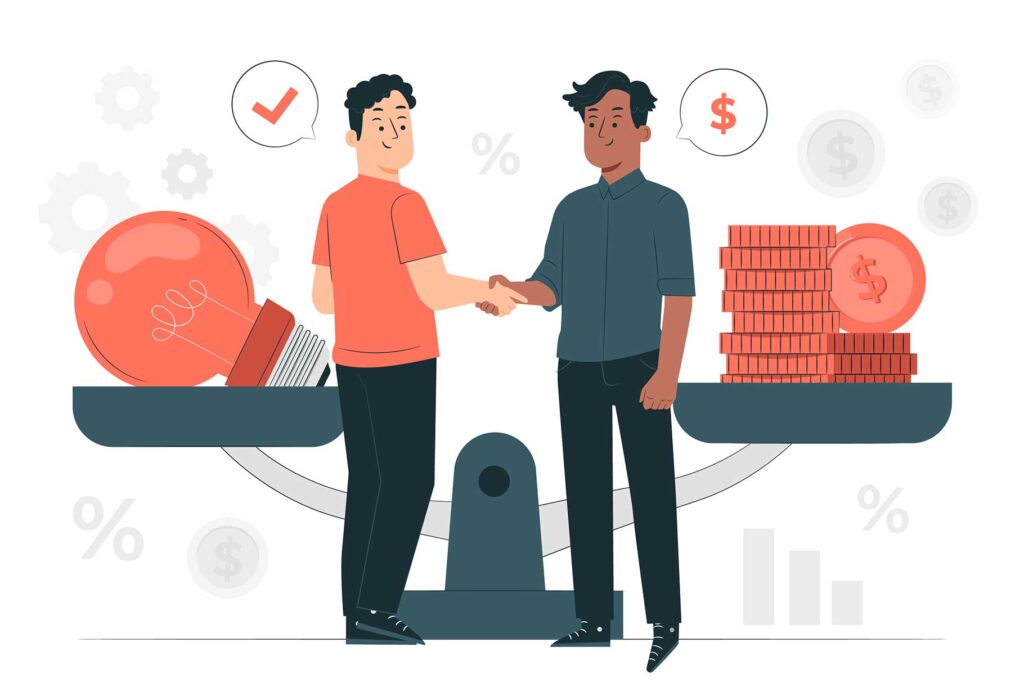
When discussing pricing with clients, here are some tips for talking about price in a clear and professional manner:
1. Be confident
Communicate your pricing with confidence, knowing that you are an expert in your field.
2. Explain the value
Clearly articulate what your clients will get out of working with you, emphasizing how it will impact their brand and business success.
3. Justify your pricing
Discuss the factors that go into your pricing structure, such as experience, expertise, complexity of the project and time required.
4. Offer options
Offer clients a variety of options based on their specific needs and budget to ensure that you are compensated fairly for your efforts.
5. Address concerns
Be prepared to address any concerns your clients may have about the pricing of your work, and be willing to provide a thoughtful explanation for it.
6. Provide examples
Share examples of your previous work or case studies that showcase the positive results you have helped other businesses achieve through logo design.
Remember to maintain a professional, respectful tone throughout the conversation. Open and honest communication will help build trust with your clients—and lead to more successful pricing negotiations!
How Do Clients Choose Who Will Create Their Logo?
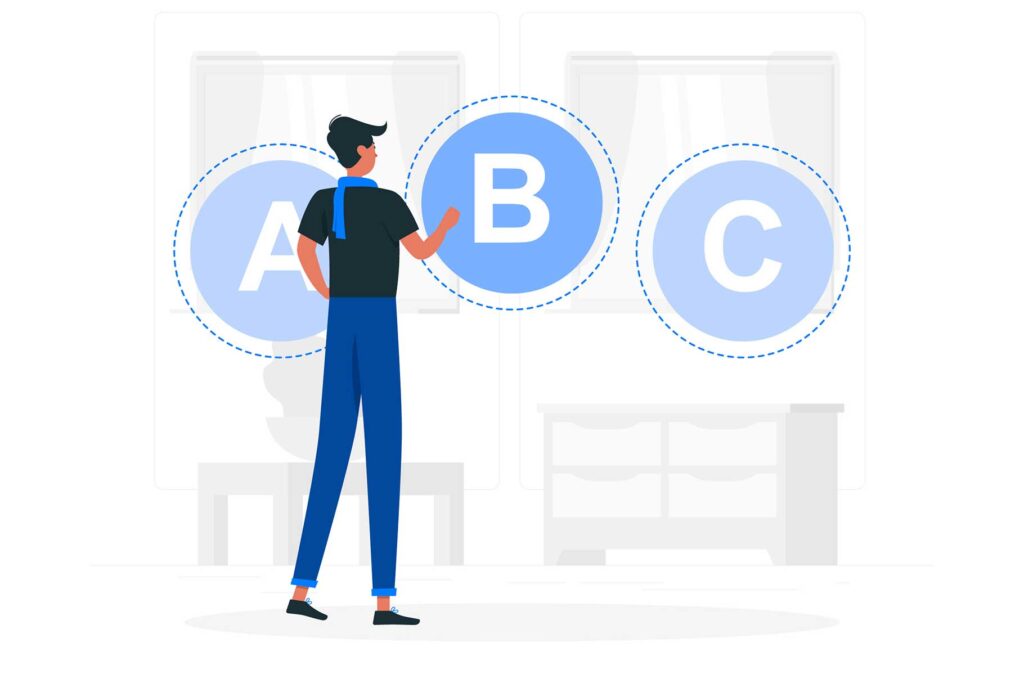
When clients are looking for a graphic designer to create their logo, they consider several factors.
1. Portfolio and Expertise
Designers’ portfolios are reviewed by clients to assess the quality and style of their previous work. They look for relevant experience and expertise in creating visually appealing logos that will make an impact on potential customers.
2. Reputation and Recommendations
Positive word-of-mouth, client testimonials, and online reviews help designers build a strong reputation.
3. Communication and Understanding
Good designers are attentive to their clients’ needs, strive to understand their brand and goals, and take responsibility for clearly communicating information throughout the design process.
4. Price and Value
When hiring a designer, clients typically compare prices and evaluate the value of different offerings. They consider whether the quality is commensurate with cost and look for designers who can create products that will appeal to their target audience.
5. Professionalism and Trust
Professional conduct, responsiveness, and reliability are essential. Clients want to work with designers who demonstrate professionalism by meeting deadlines and maintaining clear communication.
When clients consider these factors, they can make an informed decision on which designer will create their logo.
An expert who boasts a solid reputation and communicates effectively is more likely to be chosen than someone with no experience or poor design skills.
Check out our trending article on Importance of Functionality in Logo Design (The Ultimate Guide)
How can you show that you are the best option?
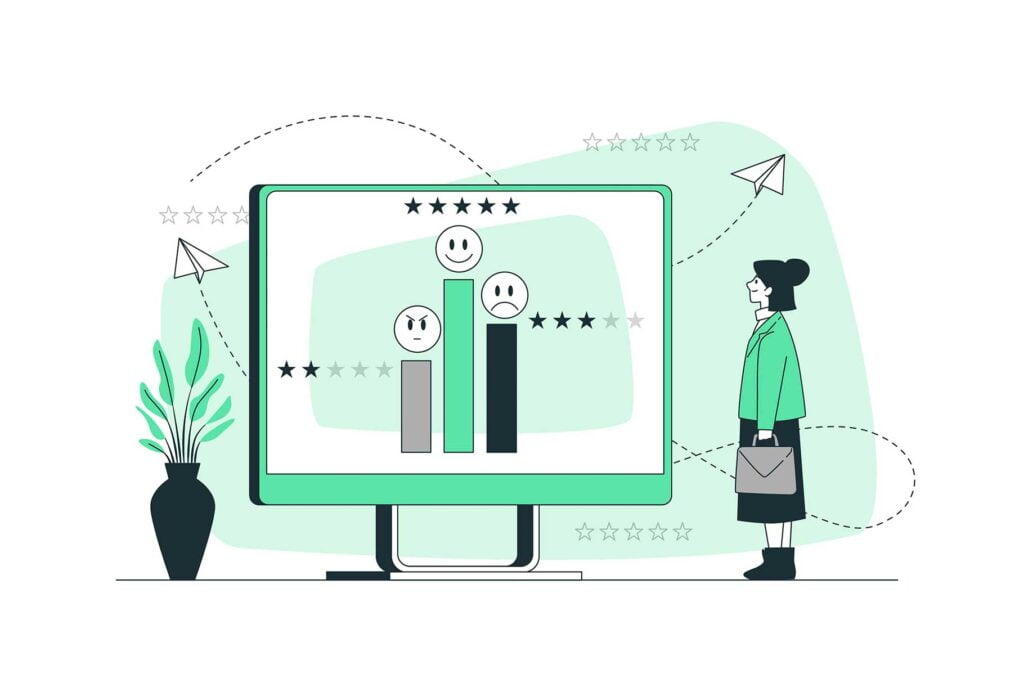
If you want to show that your logo design services are the best option, there are a few important things to consider.
First, talk about your experience and skills. Provide examples of your past logo designs to demonstrate that you can meet the client’s needs.
A second strategy is to share testimonials from happy clients, which builds trust and shows that others have been satisfied with your work.
When you communicate clearly and listen to the client’s needs, it makes them feel understood and confident in your abilities.
The best way to establish your logo design business as one of the top choices is by consistently offering clients competitive prices that reflect the value you provide.
How to Increase the Demand for Your Design Work
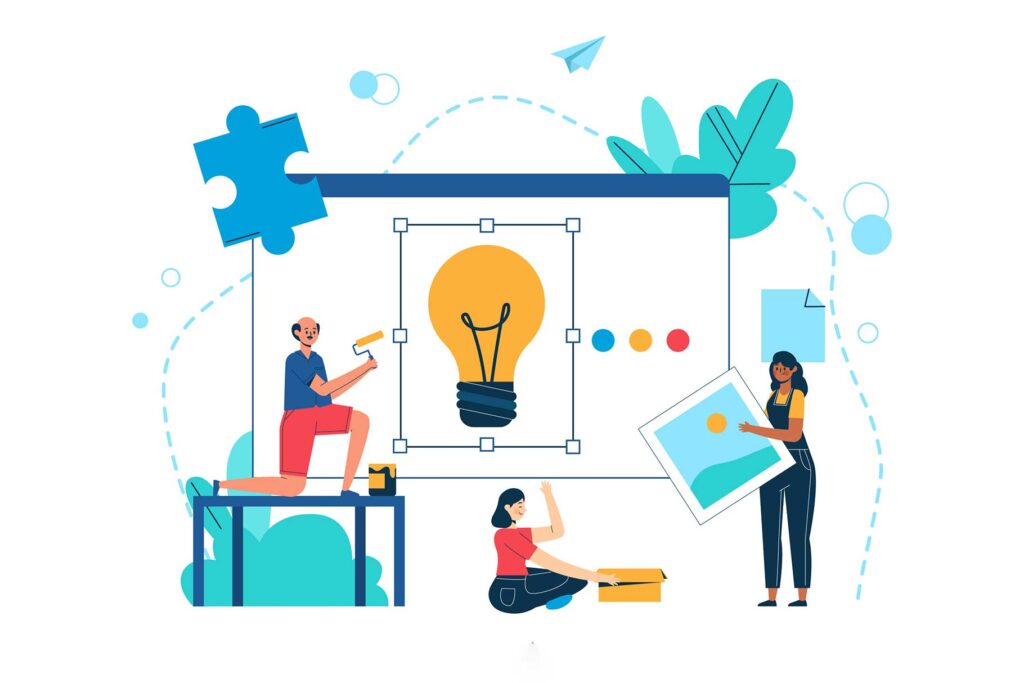
To grow and succeed, you must create more demand for your design work. Here are some effective strategies to do that:
1. Build a Strong Portfolio
Your portfolio should be an online visual expression, highlighting your best work and showing how versatile you are. Updates show that you keep current with new developments in the field.
2. Network and Collaborate
Attend industry events, join design communities and network with professionals in related fields. You might find collaborators to create new products or services that can be marketed under your brand.
3. Offer Specialized Services
Identify niche markets or industries in which your expertise is valued and seek out clients who need help with design problems.
4. Content Marketing
Establish yourself as a thought leader by writing blog posts, sharing valuable design-related content on social media and creating video tutorials. This positions you as an authority in your field and attracts potential clients.
5. Referrals and Testimonials
If possible, ask satisfied customers to refer you in writing. Getting recommendations from former clients helps you attract new business and build trust with potential clients.
6. Collaborate with Influencers
To reach a wider audience and generate interest in your design services, collaborate with popular social media accounts or influential people relevant to your target market.
7. Offer Incentives
To motivate potential clients to choose your design services, provide them with incentives such as discounts, referral rewards and limited-time offers.
By implementing these strategies and consistently delivering high-quality design work, you will build a reputation as an expert in your field.
Conclusion
In conclusion, it is important to know how to price a logo design service when running a successful business.If you understand your client’s needs and expectations, consider various factors in making a pricing decision, communicate effectively with the client—including justifications for any price increases or decreases — both parties will get what they want.
Additionally, exploring different pricing strategies and continuously evaluating your model based on market trends and client feedback are essential. Remember that every price point is intended to accomplish a specific goal—and flexibility is important when approaching these goals from as many angles as possible.
By learning how to price your creative services, you can offer clients a valuable product while still making a profit. Use this guide to help you navigate the complexities of pricing, and feel good about receiving fair compensation for your exceptional logo design services.
Recommended Reading: 15 Famous Logos With Hidden Meanings You Never Knew
FAQs
Q: How do I determine the right price for logo design services?
A: Determining the right price involves considering factors such as project complexity, your expertise, market rates, and client budget. Assess the time and effort required, research industry standards, and align your pricing with the value you provide.
Q: Should I charge an hourly rate or a flat fee for logo design?
A: Both options have their merits. Hourly rates are suitable for projects with uncertain scope, while flat fees provide clarity for clients. Consider project specifics and client preferences to decide which approach best aligns with your business model.
Q: How can I justify my pricing to clients?
A: Justify your pricing by emphasizing your experience, expertise, and the value you bring to their brand. Explain the comprehensive design process, the long-term benefits of a well-designed logo, and showcase your portfolio and client testimonials as evidence of your quality work.
Q: What if the client has a limited budget?
A: If the client’s budget is limited, explore options such as offering a scaled-down package or phasing the project into manageable milestones. Communicate the benefits of professional design and try to find a mutually beneficial arrangement that fits within their budget constraints.
Q: Can I negotiate my pricing with clients?
A: Yes, negotiation is common in the design industry. Be open to discussions, but also know your bottom line. Consider adjusting project scope, deliverables, or timelines if necessary, but ensure your pricing remains fair and reflective of the value you provide.
Q: Should I adjust my pricing over time?
A: Yes, it’s important to regularly evaluate and adjust your pricing to account for inflation, changes in your skills and expertise, and market trends. Stay informed about industry standards and be willing to adapt your pricing model to ensure continued profitability and competitiveness.
1 thought on “How to Price Logo Design Services (Ultimate Guide)”